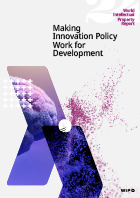How Can Scrabble Guide Policymaking?
By: Muhammed Yildirim and Federico Moscatelli
The game of Scrabble can shed light on why some countries and regions grow faster than others. It also offers valuable lessons for those striving to catch up. Read more to find out how!

Over the last three decades, the gap between poorer and richer countries have narrowed, especially in terms education, urbanization, fertility rates and infant mortality. However, the same convergence cannot be observed across income or technological output measures. Why is this? One explanation for this lies in know-how. The team at the Harvard Growth Lab found a way to explain this divergence using the game of Scrabble.

Setup and goal
In this metaphor, the know-how that goes into goods, services and technologies are the letters. The words, therefore, are the products that can be created by combining different types of know-how. However, not all combinations of letters are words: some sets of letters are just gibberish. Places (the players of the game) have different collections of letters, and their goal is to earn points based on the words they create.
Now, contrary to how the real game is played, places do not start with the same number of letters on their racks. Letters tend to stay where there are more of them and are not easy to share between players. Advanced economies have “more letters” to choose from. This grants them with a great advantage: they will not only be able to score points by building more words, but also by making longer and harder ones from early in the game. As a result, players with more letters will pull ahead of the others early on.
Gameplay and strategy
As the game progresses, places develop and start to acquire new letters. They tend to look for the ones that can help them create more words. For example, the places that have the letters A, B, E and R can already form the word BEAR. By acquiring the letter Z, they can now build ZEBRA. This behavior mimics how places move into new fields of knowledge to make new, related, products. Economists refer to this as the principle of relatedness, which captures the overlap between letters for different words.
For places with less letters (e.g., developing countries), the key is to be wise on which letters to acquire to make the words that would provide the most points, thus increasing the potential complexity of what they can create. This strategy is referred to as smart diversification.
The players that already hold a diverse rack of letters and have mapped all their possible words are part of the technological frontier. How can they diversify? One of their strategies may involve looking for creative solutions, such as recombining their letters to invent new words. Take for example, the bicycle. Inventors used parts and pieces that were already existing and recombined them into a novel means of transportation. Another strategy may be to push the frontier is by discovering new letters. The ability to use electricity, for example, provided new knowledge that spurred into many new products and services. For the bicycle, this meant the appearance of the e-bike.
Three takeaways
Policymakers can learn from the strategy of these players, identifying:
- The opportunities (words) that appear next to their current set of capabilities.
- Which of these are the words to pursue based on their score (complexity).
- Where are the missing letters that are preventing them to make these strategic moves.
Did you enjoy this story? Do you want to learn more about complexity and innovation capabilities? Find deeper insights in our related content!
Related stories

The role of Complexity in Achieving the SDGs
How can this novel economic indicator help policymakers achieve the Sustainable Development Goals?

The Singaporean Recipe for Development
Singapore’s policymakers have played a significant role in helping the state transition into a high-income economy in less than forty years. Learn about which policies proved to be the most effective!

